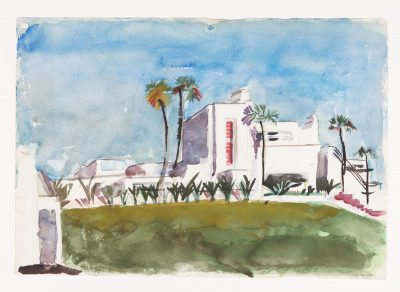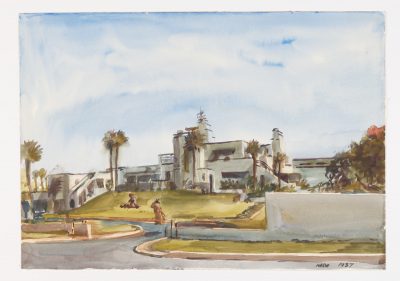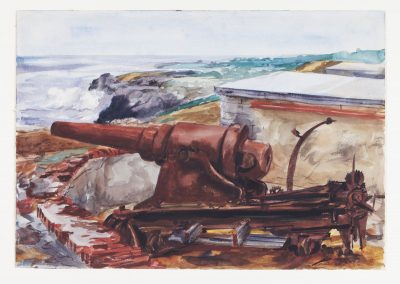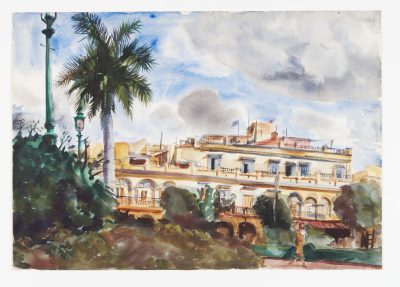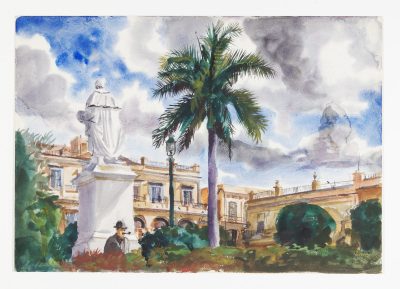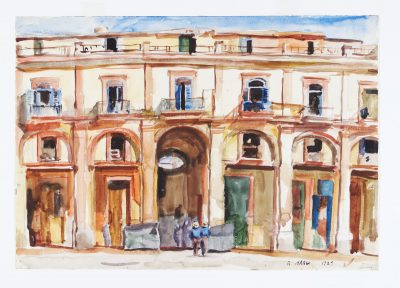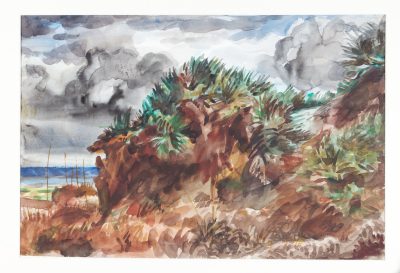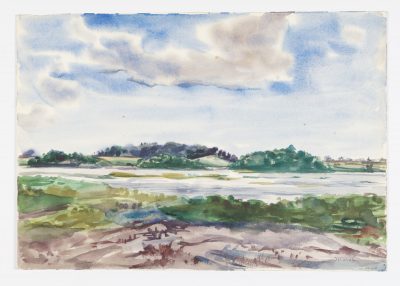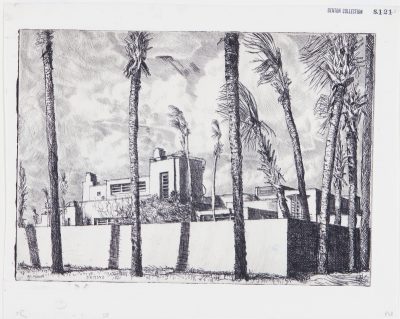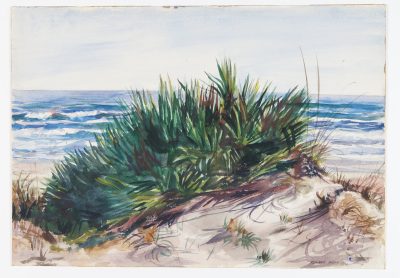While a student at Yale, Reginald Marsh established himself as an illustrator. He worked as art editor of the Yale Record from 1916-1920 and after graduation he continued to work as a freelance illustrator in New York City. He started at The Daily News as reporter and illustrator. He had a weekly entertainment column on vaudeville and worked there from 1922-25. He joined the New Yorker in 1925 (working there until 1932) and also worked as a freelance illustrator for Fortune Magazine, Esquire and Life Magazine.
It was for Life Magazine that Marsh traveled to Cuba as a correspondent in 1943. He spent a total of 80 days, dividing his time between Cuba, Brazil, and Trinidad.
He had already made several trips to Cuba in 1929, 1930 and 1931 during which time he documented the country in watercolors.
Marsh’s watercolors of Cuba depict the grand architecture of Havana, as well as the beaches. But unlike the beaches of Coney Island for which Marsh is so well known, these scenes are unpopulated. There are no thronging crowds bustling with activity, dominating, even obscuring the beach as we see in the majority of Marsh’s Coney Island scenes. In Cuba, Marsh is interested not in the gritty side of life which fascinated him in New York , but rather in a documentary approach to both city and seascape.
